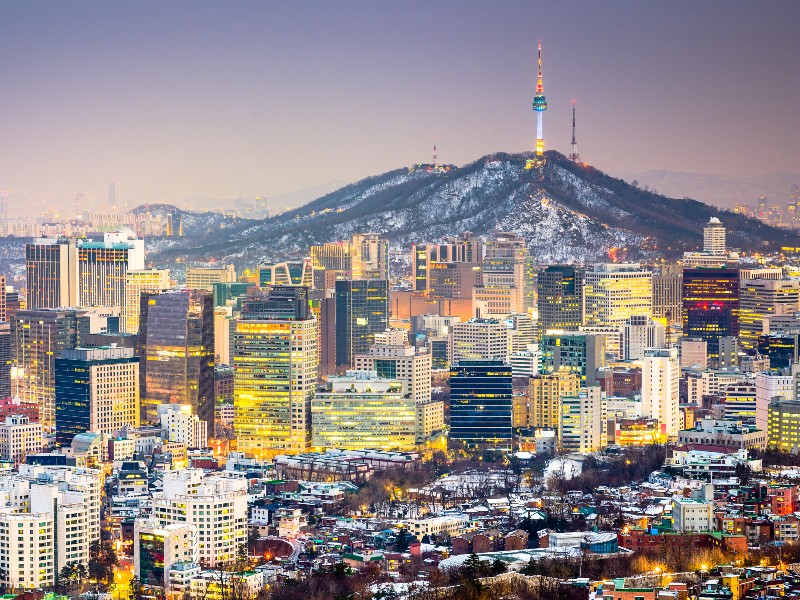

Looking at South Korea today, it’s hard to believe the country was one of the world’s poorest just a few decades ago.
But since the 1960s, its economy has been growing quickly. “In fact, from the mid-1960s to the mid-1970s, it had one of the highest growth rates in the world, and at times in the ‘80s it had the highest growth rate in the world,” said Michael Seth, professor of history at James Madison University, during the Canadian Investment Review’s podcast “Pension Passport.”
“This came rather unexpectedly by most outside experts. And it was certainly unprecedented that any developing country should transform itself as fast as South Korea. What drove it was a number of factors. But partly, it was that the South Korean government, that played a big role in planning economic development, hit upon some good strategies, which included export-oriented economic development, encouraging foreign investment and investing heavily in education.”
In the 1990s, South Korea experienced a blip in its growth, caused by the Asian financial crisis, said Seth. “It was response to a financial crisis that began in Thailand and spread throughout Asia. And that financial crisis forced the South Korean government to carry out financial regulatory reforms that needed to be carried out.”
These reforms meant South Korea was relatively insulated from the chaos that later ensued during the global financial crisis, he noted. “The problems that Western countries had — like in United States and Europe with the banking system — the Koreans had already tackled that.”
But the country still faces economic risks, said Troy Stangarone, director of congressional affairs and trade at the Korea Economic Institute, also speaking during the podcast.
For one, the country is heavily dependent on international trade, specifically trading semi-conductors. “And so you have this challenge that now that we’re going through this period where demand is declining for these types of semiconductors,” said Stangarone. “You’ve seen prices drop, you’ve seen exports in terms of volume drop. And so, that’s really hit, in the short term, the South Korean economy.”
Further, trade tension between the U.S. and China is slowing global growth generally and creating a lag in demand for imports from South Korea to China, he added.
While the trade war poses risks to South Korea, it could also have benefits, said Michael Oh, portfolio manager at Matthews Asia, during the podcast. “For example, some of the key exports that South Korea is producing are the semi-conductor components and they actually do export a lot to China. But at the same time, they do compete against Chinese companies on the devices level, so the smartphones, 5G telecoms. As this conflict expands, Korean companies could be negatively impacted when it comes to components, but they would actually benefit when it comes to devices. And any slack that is left by the Chinese companies could be picked up by other device makers. So at the end, I think South Korean companies might actually benefit if this ongoing trade issue persists between U.S. and China.”
Another economic challenge for the country is the government’s recent increases to minimum wage, which is too much elevation too quickly for businesses — especially small and mid-size ones — not to feel the crunch, said Stangarone.
These types of policies may be why the economy in South Korea saw a downturn in the first quarter of 2019, said Oh. “I think the general direction is correct, by raising the minimum wage, but I think the pace has just been a little too fast. And it doesn’t take the experts to figure out that if you raise the wages too much, too fast then actually that’s going to hurt the employment and the domestic sentiment.”
However, Oh said this can also present an opportunity for investors because it’s made valuations attractive for those with long-term time horizons.
South Korea also faces demographic challenges, noted Stangarone. “You have an aging population that, according to [United Nations’] projections, between now and 2040 will potentially lose between about a quarter and a half of its working-age population. So that’s going to mean significant change in both the structure of the South Korean economy and also the challenges that the government will face in terms of things like pension and health care.”
However, this also presents opportunities for foreign investors in health care, he added.
It’s important to look beyond big names when considering health care and other sectors, noted Oh.
“I would encourage investors to look just beyond some of the very well-known exporters in the country,” he said. “The valuation is very attractive — not just compared to emerging markets, but if you actually compare South Korea to other developed countries as well, the valuation is attractive. You’re basically buying world-class companies at a pretty substantial discount and, at the same time, the corporate governance has been improving.
“Korea has one of the best financial accounting practices in the region with very transparent financial systems now.”
Listen to the full season of “Pension Passport” at investmentreview.com/podcasts. Or download the podcast on Apple, Google Podcasts and Stitcher.
